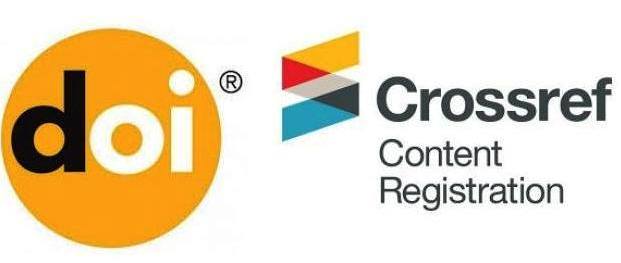Download full text in PDF
Mukvych VV, Severynovska OV. Effect of caffeine on heart rate variability parameters in female rats with doxorubicin-induced cardiomyopathy. Bìol Tvarin. 2025; 27 (1): 27–33. DOI: 10.15407/animbiol27.01.027.
https://doi.org/10.15407/animbiol27.01.027
Received 24.01.2025 ▪ Revision 10.03.2025 ▪ Accepted 20.03.2025 ▪ Published online 11.04.2025
Effect of caffeine on heart rate variability parameters in female rats with doxorubicin-induced cardiomyopathy
V. V. Mukvych, O. V. Severynovska
This email address is being protected from spambots. You need JavaScript enabled to view it.
Oles Honchar Dnipro National University, 72 Nauky Ave., Dnipro, 49045, Ukraine
Cardiotoxicity remains a significant limitation in the clinical application of chemotherapeutic agents, particularly anthracyclines. Doxorubicin (DOX), a widely used representative of this group, exhibits potent antitumor activity and is commonly administered in the treatment of various malignant tumors. One of the modern, non-invasive, and informative methods for assessing the functional state of the cardiovascular system is heart rate variability (HRV) analysis. In the context of searching for means to correct doxorubicin-induced cardiomyopathy, there is growing interest in studying the effects of natural compounds with potential cardioprotective properties. Caffeine, at low and moderate doses, is capable of exerting antioxidant effects and demonstrating potential cardioprotective activity. The study was conducted on 36 sexually mature female Wistar rats weighing 250±50 g. Healthy animals were randomly divided into three groups (n=12 per group): GROUP I (control) received physiological saline (1 mg/kg) via oral gavage; group II received doxorubicin at a dose of 1 mg/kg body weight intraperitoneally once a week for 4 weeks; group III received caffeine at a dose of 25 mg/kg body weight daily via oral gavage, along with doxorubicin at a dose of 1 mg/kg intraperitoneally once a week for 4 weeks. The electrocardiogram (ECG) was recorded in female rats using a “Cardiolab” electrocardiographic complex for a wide range of cardiological studies (HAI-Medica, Kharkiv, Ukraine). Thus, the administration of doxorubicin to female rats led to statistically significant changes in all HRV parameters, indicating the development of autonomic imbalance. In female rats of the second group, compared to the control, a significant increase was observed in heart rate (HR), mode (Mo), mode amplitude (AMo), vegetative balance index (VBI), and stress index (SI), along with a significant decrease in variation range (VR), root mean square of successive differences (RMSSD), and the percentage of NN intervals differing by more than 50 ms (pNN50). These changes suggest a predominance of sympathetic activity and reduced parasympathetic influence. In female rats that received caffeine in combination with doxorubicin, a partial normalization of HRV parameters was observed, approaching the values recorded in the control group, particularly HR, Mo, and VR. Meanwhile, AMo, VBI, and SI remained significantly elevated compared to the control group, but showed a significant decrease relative to the second group. These findings indicate the potential modulatory effect of caffeine on the autonomic regulation of heart rhythm in female rats with doxorubicin-induced cardiomyopathy. Caffeine, at the given dosage, helps prevent or attenuate autonomic disturbances caused by this chemotherapeutic agent.
Key words: cytotoxicity, doxorubicin-induced cardiomyopathy, caffeine, stimulant effects, heart rate variability, oxidative stress, female rats
- Abu-Hashem AA, Hakami O, El-Shazly M, El-Nashar HAS, Yousif MNM. Caffeine and purine derivatives: A comprehensive review on the chemistry, biosynthetic pathways, synthesis-related reactions, biomedical prospectives and clinical applications. Chem Biodivers. 2024; 21 (7): e202400050. DOI: 10.1002/cbdv.202400050.
- Bhardwaj I, Ansari AH, Rai SP, Singh S, Singh D. Molecular targets of caffeine in the central nervous system. Prog Brain Res. 2024; 288: 35–58. DOI: 10.1016/bs.pbr.2024.06.012.
- Charles A. The role of caffeine in headache disorders. Curr Opin Neurol. 2024; 37 (3): 289–294. DOI: 10.1097/WCO.0000000000001249.
- Chen Y, Shi S, Dai Y. Research progress of therapeutic drugs for doxorubicin-induced cardiomyopathy. Biomed Pharmacother. 2022; 156: 113903. DOI: 10.1016/j.biopha.2022.113903.
- Henriksen PA. Anthracycline cardiotoxicity: an update on mechanisms, monitoring and prevention. 2018; 104 (12): 971–977. DOI: 10.1136/heartjnl-2017-312103.
- Israelsen IME, Westgate CSJ, Kamp-Jensen C, Jensen RH, Eftekhari S. Effects of caffeine on intracranial pressure and pain perception in freely moving rats. 2023; 63 (9): 1220–1231. DOI: 10.1111/head.14634.
- Kciuk M, Gielecińska A, Mujwar S, Kołat D, Kałuzińska-Kołat Ż, Celik I, Kontek R. Doxorubicin — an agent with multiple mechanisms of anticancer activity. 2023; 12 (4): 659. DOI: 10.3390/cells12040659.
- Kitakata H, Endo J, Ikura H, Moriyama H, Shirakawa K, Katsumata Y, Sano M. Therapeutic targets for DOX-Induced cardiomyopathy: Role of apoptosis ferroptosis. Int J Mol Sci. 2022; 23 (3): 1414. DOI: 10.3390/ijms23031414.
- Li D, Yang Y, Wang S, He X, Liu M, Bai B, Tian C, Sun R, Yu T, Chu X. Role of acetylation in doxorubicin-induced cardiotoxicity. Redox Biol. 2021; 46: 102089. DOI: 10.1016/j.redox.2021.102089.
- Li Q, Xia C, Li H, Yan X, Yang F, Cao M, Zhang S, Teng Y, He S, Cao M, Chen W. Disparities in 36 cancers across 185 countries: Secondary analysis of global cancer statistics. Front Med. 2024; 18 (5): 911–920. DOI: 10.1007/s11684-024-1058-6.
- Li Y, Yan J, Yang P. The mechanism and therapeutic strategies in doxorubicin-induced cardiotoxicity: Role of programmed cell death. Cell Stress Chaperon. 2024; 29 (5): 666–680. DOI: 10.1016/cstres.2024.09.001.
- Li XY, Xu L, Lin GS, Li XY, Jiang XJ, Wang T, Lü JJ, Zeng B. Protective effect of caffeine administration on myocardial ischemia/reperfusion injury in rats. 2011; 36 (3): 289–294. DOI: 10.1097/SHK.0b013e3182222915.
- Lisun Y, Uhlev Y. Heart rate variability, applying and methods of analysis. Pain Anaest Intens Care. 2020; 4 (93): 83–89. DOI: 10.25284/2519-2078.4(93).2020.220693. (in Ukrainian)
- Mukvych V, Severynovska O. Modulatory effect of caffeine on heart rate variability parameters in rats with doxorubicin-induced cardiomyopathy. Bull Probl Biol Med. 2024; 4 (175): 433–441. DOI: 10.29254/2077-4214-2024-4-175-433-441. (in Ukrainian)
- Prathumsap N, Shinlapawittayatorn K, Chattipakorn SC, Chattipakorn N. Effects of doxorubicin on the heart: From molecular mechanisms to intervention strategies. Eur J Pharmacol. 2020; 866: 172818. DOI: 10.1016/j.ejphar.2019.172818.
- Rawat PS, Jaiswal A, Khurana A, Bhatti JS, Navik U. Doxorubicin-induced cardiotoxicity: An update on the molecular mechanism and novel therapeutic strategies for effective management. Biomed Pharmacother. 2021; 139: 111708. DOI: 10.1016/j.biopha.111708.
- Saimaiti A, Zhou DD, Li J, Xiong RG, Gan RY, Huang SY, Shang A, Zhao CN, Li HY, Li HB. Dietary sources, health benefits, and risks of caffeine. Crit Rev Food Sci Nutr. 2023; 63 (29): 9648–9666. DOI:1080/10408398.2022.2074362.
- Song X, Singh M, Lee KE, Vinayagam R, Kang SG. Caffeine: A multifunctional efficacious molecule with diverse health implications and emerging delivery systems. Int J Mol Sci. 2024; 25 (22): 12003. DOI: 10.3390/ijms252212003.
- Tiwari R, Kumar R, Malik S, Raj T, Kumar P. Analysis of heart rate variability and implication of different factors on heart rate variability. Curr Cardiol Rev. 2021; 17 (5): e160721189770. DOI: 10.2174/1573403X16999201231203854.
- Xue S, Chen H, Zhang J, Tian R, Xie C, Sun Q, Wang H, Shi T, Guo D, Wang Y, Wang Q. Qishen granule alleviates doxorubicin-induced cardiotoxicity by suppressing ferroptosis via nuclear erythroid factor 2-related factor 2 (Nrf2) pathway. J 2024; 335: 118604. DOI: 10.1016/j.jep.2024.118604.
- Zapadnyuk IP, Zapadnyuk EA, Zakharija EA. Laboratory Animals: Breeding, Maintenance, and Use in Experiments. Kyiv, Vyshcha Shkola, 1983: 383 p. (in Ukrainian)














